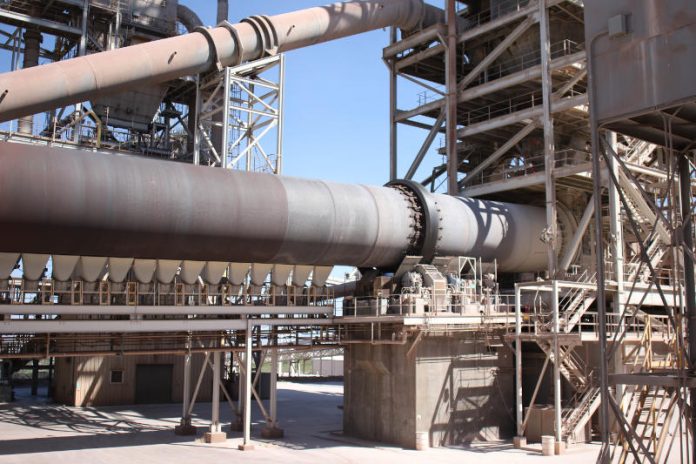Though Salt River Materials Group owns approximately 3,000 acres of the Mingus Mountain foothills for its Clarkdale Cement Plant operation, it’s the facility’s control room that makes the
biggest impression.
Three men make it their home for a shift in the plant’s 24-hour, seven-day-a-week operation, sitting before a bank of computers. Above their heads, an array of high-definition TVs broadcast live feeds of data, as well as views of the interior of the plant’s 2,500 degree-Fahrenheit, 3,000-tons-aday rotating kiln.The brilliance of the kiln’s massive flame washes out nearly a third of the visual feed.
“We burn 350 tons of coal and 50 tons of petcoke a day,” CCP Vice President of Cement Operations Gregg St. Clair said, adding that the plant produces 600,000 tons per year of cement for distribution throughout the state and the western U.S — short of the plant’s 1.2 million-ton capacity but far above its lowest production point during the recession, 300,000 tons.
The plant, which was built in 1959 and modernized in 2002, employs approximately 130 people with an annual payroll of over $8.5 million, contributes approximately $3 million in local taxes, pays approximately $10 million to local vendors and contributes around $140,000 to area charities.
According to SRMG, the plant produces upwards of 35 percent of all the cement manufactured in Arizona.
Since 1987, the plant has been owned by the Salt River Pima-Maricopa Indian Community of the Phoenix Metropolitan area.
“With us being owned by a tribe, we’re 100 percent American-owned,” SRMG Director of Corporate Affairs Ruben Guerrero Jr. said. “And our cement doesn’t leave Arizona, for the most part.”
Despite being such an integral part of the economic landscape — not to mention a visible one: The plant’s 471-foot-tall pre-heater tower is the tallest structure in the Verde Valley, by far — St. Clair said that many people don’t know what the plant does. Even with a sizable, and ever-growing, portion of the foothills mined away for limestone and other cement ingredients, people remain curious but uninformed.
The fact that SRMG operates a gypsum mine in Camp Verde, employing three people to supply the concrete additive, is nearly unknown among locals.
Some of the lack of awareness may have to do with emissions — or, rather, the lack of emissions. According to St. Clair, though it combusts coal, natural gas and petroleum coke, the plant boasts “some of the lowest emission rates in the country.”
In addition, it uses and produces little hazardous waste and has been awarded an Environmental Protection Agency Energy Star designation for 10 years running.
About 4 percent of the cement’s ingredients are not sourced locally. Targeting the correct chemistry for optimal concrete can be a challenge, especially with so little coming in from the outside, but the entire process is monitored, the mixture adjusted automatically.
“Basically, we’re making a kind of recipe,” St. Clair said.



